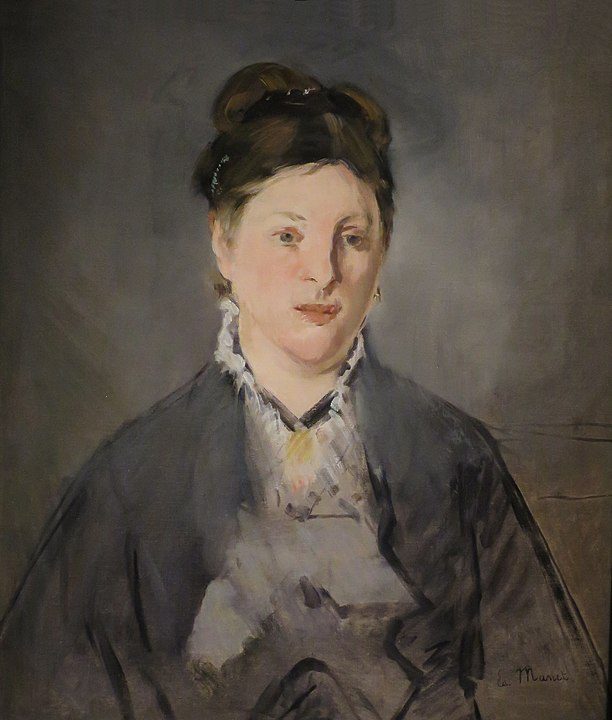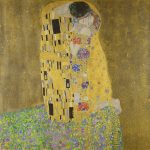
Édouard Manet, one of the most influential figures in modern art, revolutionized painting with his bold vision and unorthodox techniques. Yet, his life and career were profoundly shaped by a quiet yet steadfast presence: Suzanne Leenhoff. As his muse, wife, and supporter, Suzanne was integral to his artistic evolution and personal life.
Their love story is one of resilience and devotion, set against the backdrop of 19th-century Paris. It is a tale of overcoming societal norms, with Suzanne standing by Manet through controversies and health struggles. Together, they forged a bond that defied conventions and inspired some of his most memorable works.
This article explores the depths of their relationship, unraveling its mysteries and examining its influence on Manet’s career. From their scandalous beginnings to the challenges they faced, their story is a testament to the power of love to endure adversity and shape legacy.
Their relationship is not merely an artist-muse dynamic but a partnership that exemplifies how love and creativity intertwine, leaving an indelible mark on the world of art.
Early Lives: Paths That Crossed in Paris
Édouard Manet was born on January 23, 1832, in Paris to an affluent family. His father, Auguste, was a prominent civil servant, and his mother, Eugénie, had aristocratic connections. Manet’s artistic aspirations clashed with his family’s expectations, leading him to study painting under Thomas Couture. A trip to Europe further shaped his style, exposing him to the works of the Old Masters and inspiring his later innovations.
Suzanne Leenhoff, born in 1830 in Zaltbommel, the Netherlands, grew up in a musical household. Her father, an organist, encouraged her talents, and Suzanne became an accomplished pianist. She moved to Paris in the 1840s, seeking opportunities as a music teacher. It was through this profession that she became acquainted with the Manet family, as she was hired to teach Édouard’s younger brothers.
Their meeting marked the beginning of a deep connection. Suzanne’s calm demeanor and artistic sensibilities provided a contrast to Édouard’s fiery ambition. Over time, their bond grew stronger, despite the rigid social constraints of 19th-century Paris.
In an era where societal roles were strictly defined, Suzanne’s role as a foreign woman pursuing her career in Paris was unusual. Her independence and resilience made her an ideal partner for Manet, whose own life defied convention.
A Scandalous Start: Secrets and Speculations
The relationship between Édouard and Suzanne began under a veil of secrecy, partly due to the birth of Suzanne’s son, Léon, in 1852. Official records listed Léon as Suzanne’s younger brother, a claim widely believed to mask his true identity. Speculation remains about whether Léon was Manet’s son or possibly even the child of Manet’s father, Auguste.
Such rumors added complexity to their relationship, particularly as Manet’s family likely disapproved of Suzanne. Nevertheless, Édouard maintained his connection with her, demonstrating his commitment despite societal pressures.
The need for discretion shaped the early years of their bond. They carefully navigated the gossip and judgment of Parisian society, preserving their relationship in private while continuing to build trust.
Their ability to endure these early challenges revealed a foundation of mutual respect and understanding. Suzanne’s quiet resilience and Édouard’s determination allowed their love to flourish in the shadows, setting the stage for a lifelong partnership.
The Marriage: A Union of Love and Companionship
After more than a decade of companionship, Édouard and Suzanne married on October 28, 1863, in a modest ceremony. By this time, Manet had already established himself as a controversial figure in the art world, known for challenging conventions with works such as The Luncheon on the Grass. Their marriage brought stability to their private lives, offering a reprieve from the societal pressures they had faced for years.
Suzanne’s role in Manet’s life extended beyond that of a spouse. She became his emotional anchor, providing support as he faced harsh criticism from the public and the art establishment. Her unwavering presence allowed him to focus on his work and continue pushing artistic boundaries.
The couple’s bond deepened as they navigated personal and professional challenges together. Manet’s health began to decline in the years following their marriage, making Suzanne’s role as his caretaker increasingly significant. Despite these difficulties, their partnership remained strong.
Their marriage, though understated in its outward appearances, was a testament to their enduring commitment. Suzanne and Édouard proved that love and companionship could withstand the weight of public scrutiny and personal hardship.
Suzanne as Muse: The Woman Behind the Art
Suzanne’s influence on Manet’s work is unmistakable. She appeared in several of his most celebrated paintings, including The Reading and Music in the Tuileries. These works not only capture her grace and beauty but also reflect the intimacy of their relationship.
As a muse, Suzanne played a crucial role in shaping Manet’s artistic vision. Her presence inspired him to explore themes of domesticity and modern life, breaking away from traditional artistic norms. In many ways, Suzanne embodied the modern woman that Manet sought to depict in his work.
Unlike many muses of the time who remained anonymous or idealized, Suzanne’s portrayal was deeply personal. Manet’s paintings of her reveal a sense of familiarity and tenderness, offering viewers a glimpse into their private world.
Suzanne’s contributions to Manet’s art extended beyond her appearances in his work. Her quiet support and understanding provided the stability he needed to challenge conventions and create art that would redefine modern painting.
Trials and Triumphs: A Shared Journey
The later years of Édouard and Suzanne’s relationship were marked by significant trials. Manet’s health deteriorated due to syphilis, a condition that caused immense physical pain and limited his ability to work. During this difficult period, Suzanne took on the role of his primary caretaker, demonstrating unwavering devotion.
Despite these challenges, the couple found moments of joy and solace in their shared experiences. Manet continued to paint smaller works, often drawing inspiration from their life together. Suzanne’s presence became even more critical as his physical condition worsened, highlighting the depth of their bond.
Their shared journey through illness underscored the resilience that had defined their relationship from the start. Suzanne’s ability to provide care and comfort in the face of adversity reflected the strength of her character and her commitment to their partnership.
Manet’s death on April 30, 1883, marked the end of their shared journey but left behind a legacy of love and artistic achievement. Suzanne’s role in his life ensured that their story would be remembered as one of devotion and mutual support.
The Legacy of Their Love
Suzanne outlived Manet by over two decades, passing away in 1906. In the years after his death, she managed his estate and worked to secure his place in art history. Her efforts helped elevate his reputation, ensuring that his contributions to modern art were recognized.
The love story of Édouard and Suzanne continues to captivate audiences, offering insight into the human connections behind great works of art. Their relationship highlights the power of love to inspire creativity and provide strength during times of hardship.
Today, their story serves as a reminder of the personal narratives that shape artistic legacies. The bond between Manet and Suzanne remains a testament to the enduring influence of love on art and life.
Key Takeaways
- Édouard Manet and Suzanne Leenhoff shared a lifelong relationship that defied societal norms.
- Suzanne was Manet’s muse and caretaker, inspiring many of his most iconic works.
- Their relationship endured challenges, including public scrutiny and Manet’s declining health.
- Suzanne played a pivotal role in preserving Manet’s legacy after his death.
- Their story reflects the profound connection between love and artistic expression.
FAQs
1. Who was Suzanne Leenhoff?
Suzanne Leenhoff was a Dutch pianist, Édouard Manet’s wife, and his muse in several of his most iconic paintings.
2. What was the controversy surrounding Suzanne and Léon?
Léon, Suzanne’s son, was rumored to be either Édouard Manet’s son or his father Auguste’s, adding mystery to their relationship.
3. What role did Suzanne play in Manet’s art?
Suzanne appeared in several of Manet’s works and served as an inspiration for his exploration of modern themes.
4. How did Suzanne support Manet during his illness?
Suzanne acted as Manet’s caretaker, providing physical and emotional support during his battle with syphilis.
5. What is the legacy of their love story?
Their love story remains an example of how personal relationships can shape artistic legacies and endure beyond the constraints of their time.




